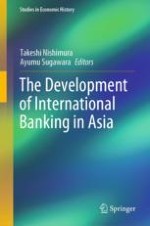2020 | OriginalPaper | Buchkapitel
3. From Silver to Gold: The Currency Reforms in Asia Before 1914
verfasst von : Takeshi Nishimura
Erschienen in: The Development of International Banking in Asia
Verlag: Springer Japan
Aktivieren Sie unsere intelligente Suche, um passende Fachinhalte oder Patente zu finden.
Wählen Sie Textabschnitte aus um mit Künstlicher Intelligenz passenden Patente zu finden. powered by
Markieren Sie Textabschnitte, um KI-gestützt weitere passende Inhalte zu finden. powered by
